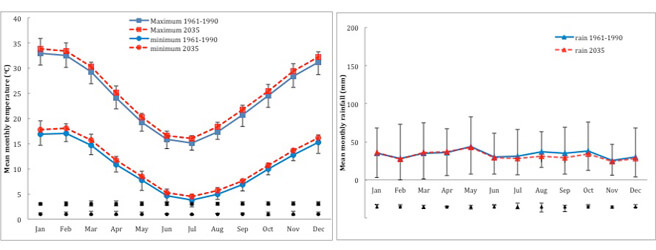Changes in temperature and rainfall
Like Gatton, the Hay region is predicted to experience significant temperature increases by 2035. Annual maximum and minimum temperatures are projected to increase by 0.7-1.4°C and 0.6-1.2°C respectively. Days above 40°C will increase from 4.5 to 6.8 days per year.
Rainfall projections range from a 2% increase to a 12% decrease, with any decrease most likely to occur during spring.
Potential effects on crops
- The Hay region is projected to experience and increase in extreme summer temperatures, potentially making it difficult to produce quality summer crops. However, if water is available yield may be unaffected
- High temperatures could adversely affect melon quality and kernel fill in sweet corn
- Despite rises in temperature, the frost window is likely to increase. There is potential for crop damage as warmer conditions stimulate new growth, which is then susceptible to early and late frosts
- Projected water availability for the Murrumbidgee is likely to be less affected than previously thought. During 1997-2006 surface water availability declined by 30%. however, the best estimate for 2035 is a 9% reduction in water availability
- Changes in local rainfall have little impact on availability of irrigation water
Click HERE for a table showing the effects of changes in average temperature of +1oC, +2oC, +3oC, +4oC as well as the impact of 5 days over 35oC for major crops grown in Hay.
Note : These descriptions relate to the temperatures that the crops experience and not to changes in monthly average temperatures. An increase of 1oC in monthly average temperature can easily mean increases of 4oC or more on particular days.
